We're back! Plus more about acorns!
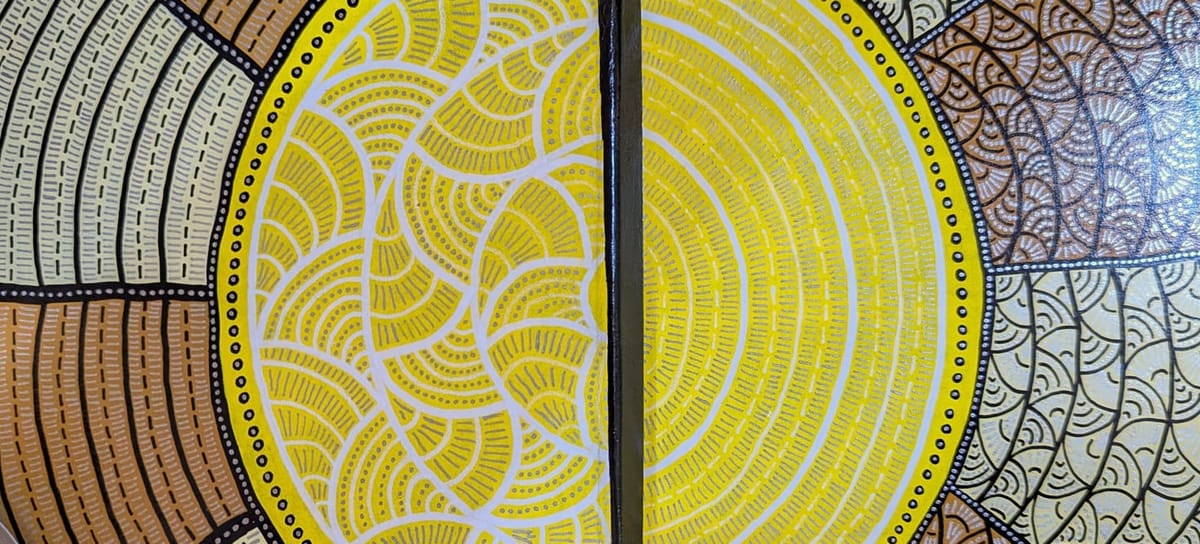
Hey all! Thanks for being patient with me while I was getting some rest. Autistic burnout is a bear to manage, and I doubt I'll be able to fully pull out of it until acorn season's over and I can go into winter recharging mode for a while, but at least I'm back to being mostly functional most of the time. If anyone has a magic amulet that pauses time they could lend me, I promise to put it to good use and give it back when I'm done 😂 In the meantime, here's this week's newsletter:
What I Did On My Summer Vacation
Apart from sleeping and playing Guild Wars 2, I spent most of my rest break taking time for creative projects.
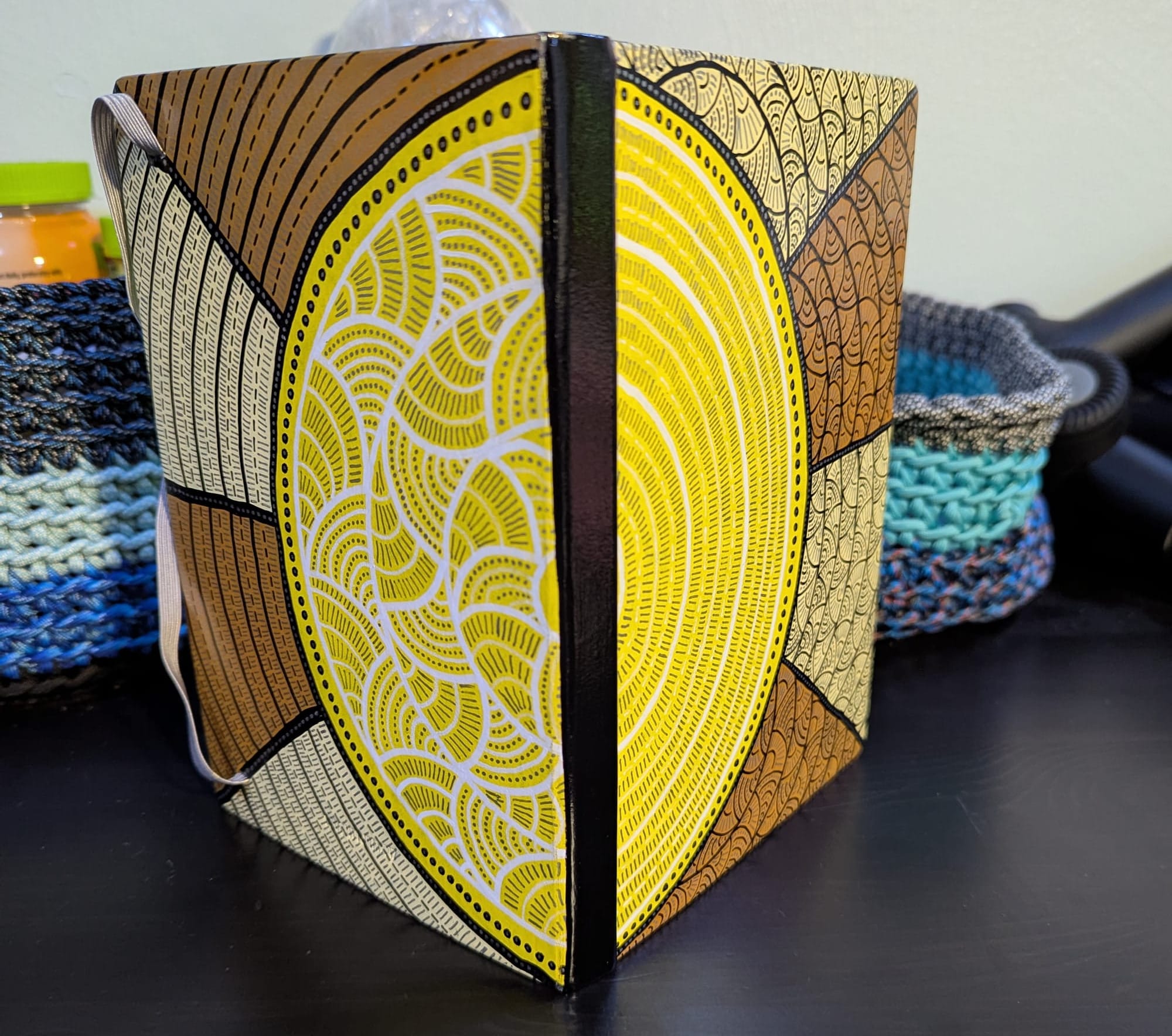
I keep a daily journal to track seasonal foraging observations, as well as the details of projects I'm working on. I mostly use Leuchtturm dot grid journals, but I like to customize the covers with my own art before I start using them. This one had been sitting on my bedside table for about six months waiting for embellishment, so it was one of the first things I tackled. I'm quite happy with how it turned out, and I'm looking forward to using it when my current journal fills up in another three or four months.

I also made several batches of our "Commoner's Hour" tokens. I'm still working on a full write-up of how hour tokens work for the website, but the short version is that they serve as an internal barter currency within Montague Commoners.
Any artist can make them by picking up a blank token from our artisan market booth and spending an hour embellishing it. This turns it into the physical embodiment of an hour of work. They can then use the finished token to buy things from the Commoners shop.
Artists and crafters can earn tokens by contributing items they've made to the Commons. Non-crafters can earn tokens by contributing their labor to the Commons in other ways. (One of the other things on my to-do list is setting up a "Quests Available" page on the website so it's easier for people to find tasks they might want to help with.)
This project is still in its infancy, and it's probably going to take a while to catch on, but I'm hoping that over time it will grow into a viable local currency that people can use for fair local labor exchange.
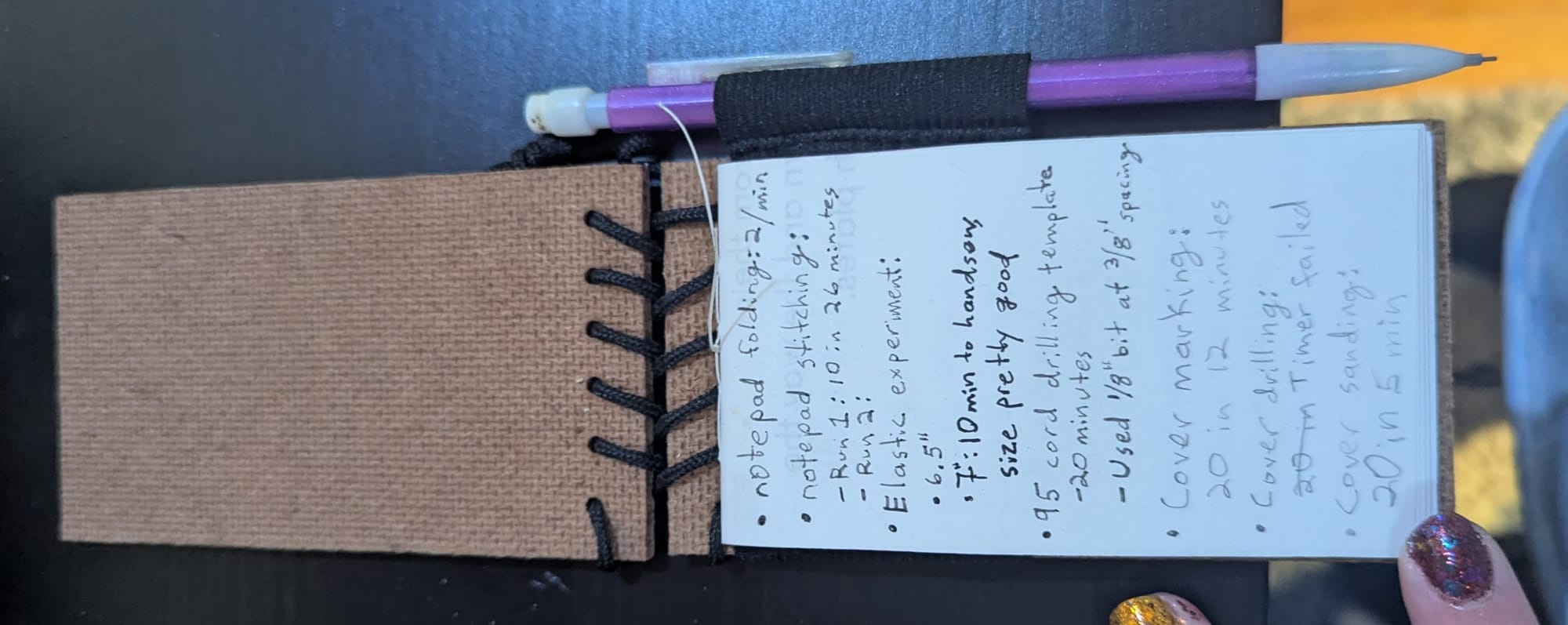
Lastly, I started developing a new project that's been in the back of my mind for a while: the Commoner's Notepad. When we turn scrap paper into seed packets, we end up with a bunch of 2.5"x8.5" slips of paper left over. They're great for making shopping and to-do lists, but after six years of making seed packets, I had thousands of these slips, and there are only so many lists a person can make. So I wanted to find another use for them.
The answer came when I made a big batch of clipboards for the Rank MI Vote campaign. We had a bunch of 6"x48" scraps of hardboard left over, and I was pretty sure I could turn those scraps into durable and re-usable notepad covers that could protect pads made from the paper slips and turn them into useful pocket-sized note-taking tools. A couple of prototypes later, I had a design I was happy with, and I started a production run of 50 (because that was as many as I had scrap materials for.) I'm still working on that run, and it'll probably be at least a few weeks before they're ready for sale, but I'm really happy with the design. Turning scrap into something useful is just about my favorite activity, and I love how durable these are without feeling bulky in my pocket.
I'll be doing a more detailed write-up of how to make them in a later newsletter once I have pictures of the whole process.
Coming Up Next Week
- Thursday, 7-8:30 pm at Montague City Hall underneath the public library at 7887 Ferry St. - ROAD is hosting a discussion of Ranked Choice Voting. We'll have a mock election where we vote on our favorite muffins, and we'll go through the counting step by step together so that everyone can see exactly how it works. (Edited to fix an error that went out in the initial email.)
- Friday, 12-1pm at the Weathervane - Dance For Democracy! Come sing songs, meet other like-minded locals, and exercise your right to free speech!
- Saturday, 9am-3pm at the Artisan Market:
- We'll be open the whole time, and assuming I can find all the bits to the flour mill, we'll be making acorn flour!
- From 12:30-3pm, WLACAC is having a "Celebrate Solar" Community Picnic! There will be free food, fun games, and live music, so bring the whole family.
Food of the Week - Acorns!
Disclaimer: the food of the week is probably going to be acorns for the next month or so. Acorns are one of our most plentiful wild foods around here, and there's a lot to learn about them. This week, we're going to start with how to tell whether an acorn is good to harvest or not.
Now, I want to be clear that it's really hard to learn this by reading something online, and no one will judge you if you bring "bad" acorns to the processing table. There's no substitute for sitting down with someone who knows what they're doing and having them walk you through the process of sorting the food acorns from the not-food acorns. A lot of it is instinctual, and it takes some practice before you get the hang of it. My goal here is simply to introduce you to some of the things you'll want to look for and give you a place to start.

The best way to judge the health of an acorn is to look at the little pad where the acorn attaches to the cap. (I spent close to an hour today trying to find the botanical name for it, but I haven't had any luck so far. If anyone out there knows, please tell me.) In a healthy acorn, that little pad will be a healthy-looking cream color. If it's a dark brown or visibly damaged, the acorn inside probably isn't good to eat.

If the acorn still has its cap attached, it was dropped prematurely. It may have simply been knocked off the tree while it was young, or the tree may have noticed signs of disease or weevil activity. Either way, not food.

Here are some examples of acorns with rotten or missing cap attachment pads. The pad is often softer or weaker than the rest of the shell, so it tends to be the first place attacked by mold or squirrels.
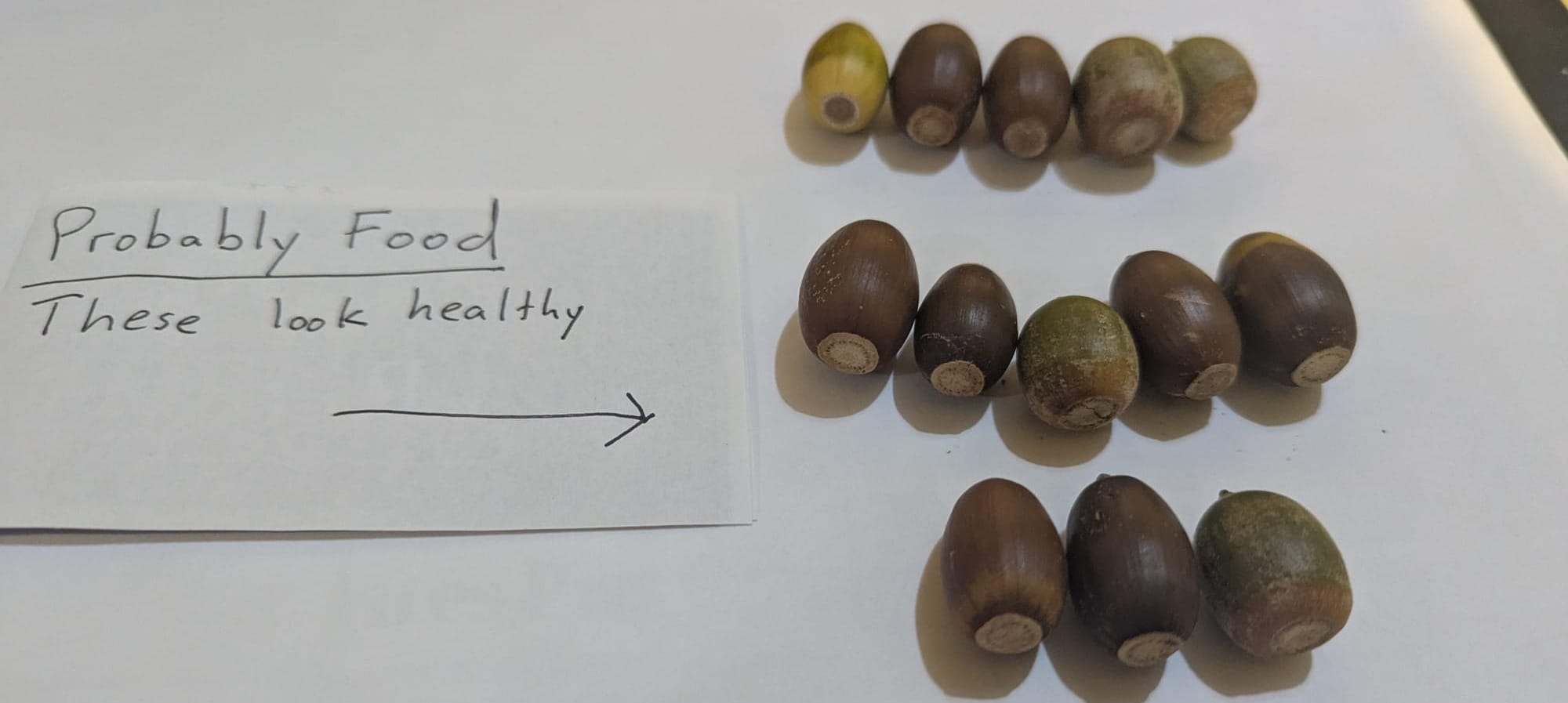
Here are some examples of healthy-looking acorns. You never know 100% until you get the shells off, but these are all acorns that are worth shelling. You'll notice that there are a variety of shell colors and sizes here. We have at least four or five different species of oaks around here, and several of them bear acorns that stay green after they ripen. I'll talk more about identifying different species next week, but in the meantime just know that in this context, green doesn't mean unripe.
We're still in the very earliest stage of the season, and most trees aren't dropping yet, but it's hard to go anywhere in town without running across a heavily-laden white oak getting ready to throw food at us, so I think we're going to be in for a busy harvest season.
Solidarity Steps
If you want to support organizers on the ground in DC who are working to keep unhoused and non-white people safe during Trump's military occupation of the city, Remora House is a great way to do that. They're a mutual aid collective working directly with some of the most vulnerable folks in DC to make sure that everyone has food, clothing, and medical supplies.
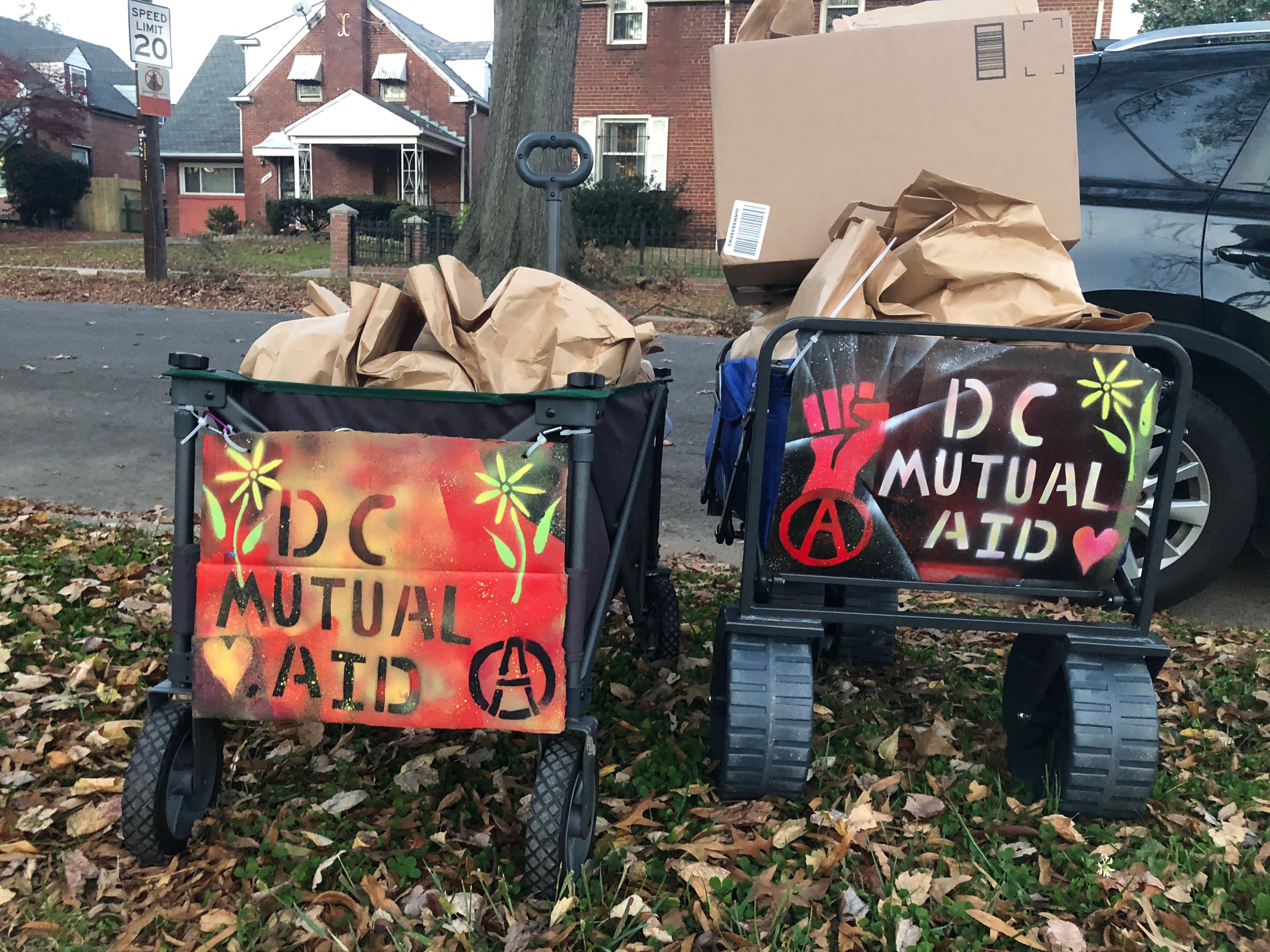
Recommendation Corner
Kelly Hayes is a long-time organizer in Chicago whose work I've recommended here before. She's got a new book coming out in November, and this is a great time to pre-order it. It's called Read This When Things Fall Apart, and it's a collection of letters from organizers all over the country about facing moments of despair and finding the seeds of hope to keep going.
This Week's Nails
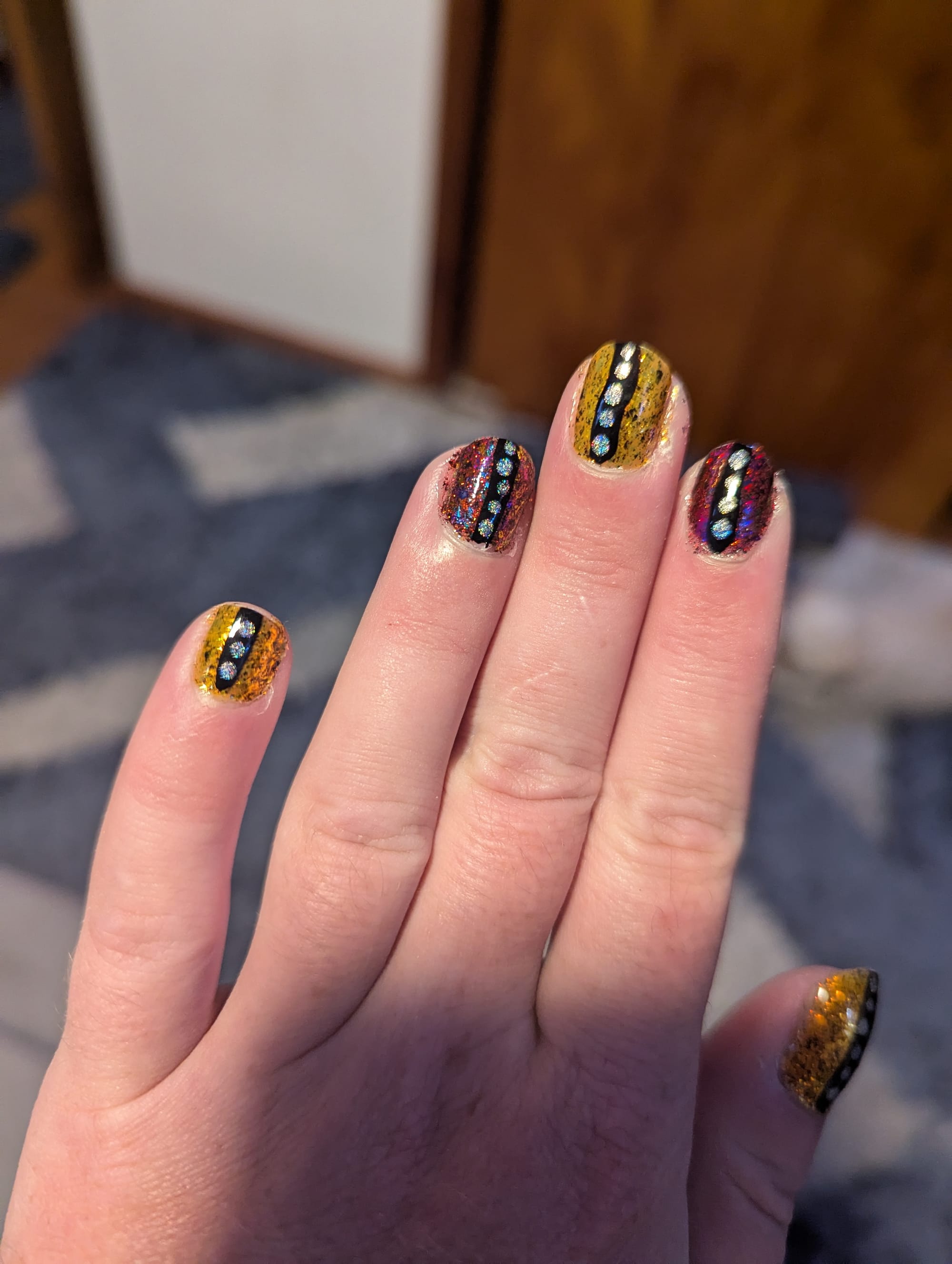
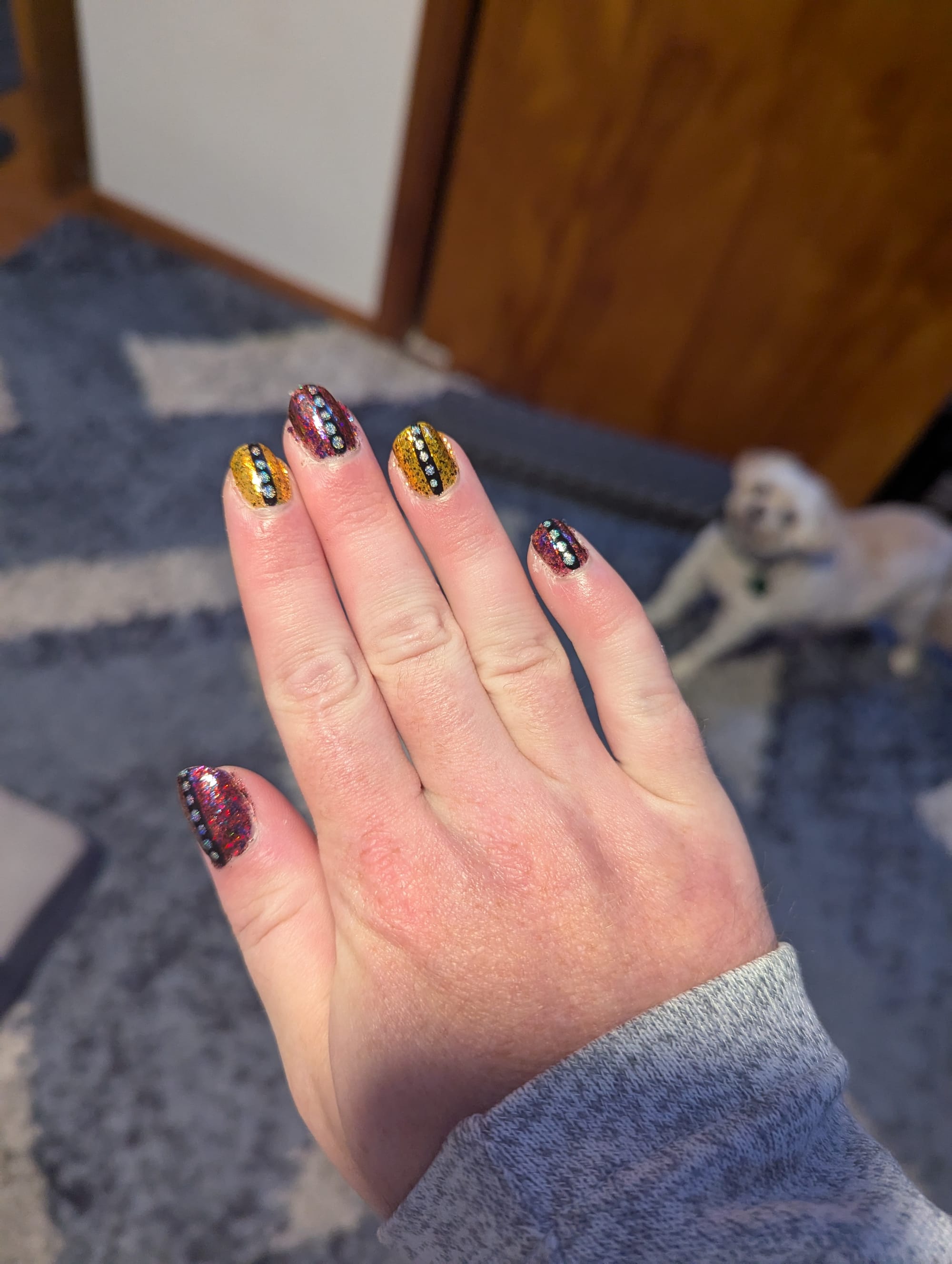
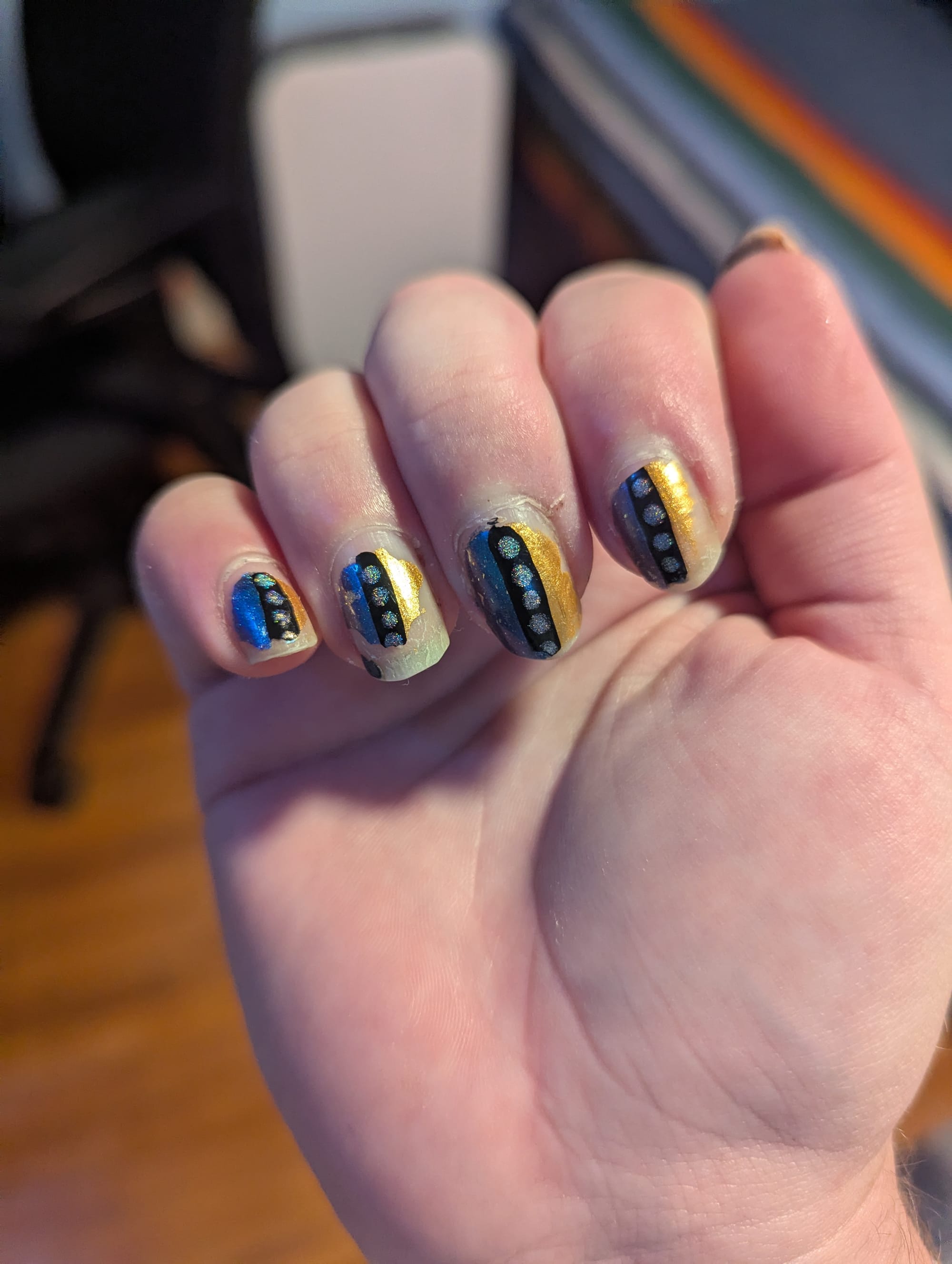
You made it to the end of the newsletter, and that means you get to see this week's nails! I went with glittery yellow and red this week in honor of some of the maples starting to get their fall color. I'm throwing in a "before" picture as well so you can see what my nails looked like after skipping my routine for two Sundays in a row 😂 Honestly, they held up pretty well for a three week old manicure. Goes to show the importance of a good base coat and top coat.

